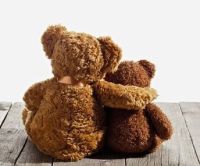
The European Union’s 2019 RAPEX Annual Report
shows that there is a continued focus by market surveillance authorities on
toys and children’s products.
Published on July 7, 2020, the latest
results from the Rapid Alert System for dangerous non-food products (RAPEX)
show that toys account for 29% of notified products, with motor vehicles in
second place at 23%. Clothing, textiles, and fashion items are in third place
with 8% of notifications, but it should be noted that children’s cloths and
shoes are often the notified product. In 2019, toys also accounted for 7% of
follow-up notices, a clear demonstration of Member State’s determination to
protect children from dangerous products.
Since 2012, the annual reports show a
general stabilization in the number of alerts. In 2019, a total of 2, 243
notifications for unsafe products were made. There was, however, an increase in
the number of follow-up actions – from 4,050 to 4,477. 80% of these related to
motor vehicles.
The annual report also
shows that injury is the
most notified risk, which again relates to a number of motor vehicle alerts and
children’s clothes and toys. The second most notified risk was chemical (23%).
These are mainly associated with certain toys, jewelry, and clothes.
When looking at risk in toys, we see 47%
relate to chemicals – often the presence of phthalates in plastic dolls and
boron in slime toys. In 2019, there was also a large number of toys found to be
dangerous because they contained button batteries that were easily accessible
and could be swallowed.
The report also notes that 16% of RAPEX
alerts in 2019 related to dangerous products that were sold online. Internet sales are one of several areas that
are receiving attention.
The EU Commission has also stated in its
report that it is helping market surveillance authorities to work together on
joint tests for specific projects – Coordinated Activities on the Safety of
Products (CASP). The products that have been focused on so far are:
- 2019 –
soft-filled toys, slime toys, personal transporters, children’s bicycle seats, batteries,
and chargers - 2020 –
toys, jewelry, home play outdoor equipment, cables, small kitchen heating
appliances, baby nests and children’s car seats
[if !supportLists]
In addition, COVID-19 related products
(masks, gloves, hand sanitizers) will also be analyzed in 2020.
The products chosen for CASP are a clear
indication that children’s products remain a key focus of EU market
surveillance authorities.
SGS Product Recalls
SGS is committed to
providing stakeholders with the latest news concerning product recalls from around
the world. SGS sends a list of the latest unsafe product notifications in
Europe, the US, Canada and Australia every week on the Product Recalls online
platform. EU and US statistics are also published quarterly on Product Recall
Trends. This information is also distributed with the SafeGuards. To learn more
about SGS Product Recalls.
SGS SafeGuardS keep you up to date with
the latest news and developments in the consumer goods industry. Read the full European RAPEX 2019 Annual Report: Focus on
Children’s Safety SafeGuardS.
Subscribe here to receive SGS SafeGuardS direct to your inbox.
For further information contact:
Frederique Lorber
Knowledge Management – Senior Project Manager
Tel: +33 4 42 61 64 42
Email: crs.media@sgs.com
Website: www.sgs.com/cgnr
LinkedIn: sgs-consumer-goods-&-retail
About SGS
SGS is the world’s leading inspection, verification, testing and certification
company. SGS is recognized as the global benchmark for quality and integrity.
With more than 89,000 employees, SGS operates a network of over 2,600 offices
and laboratories around the world.
